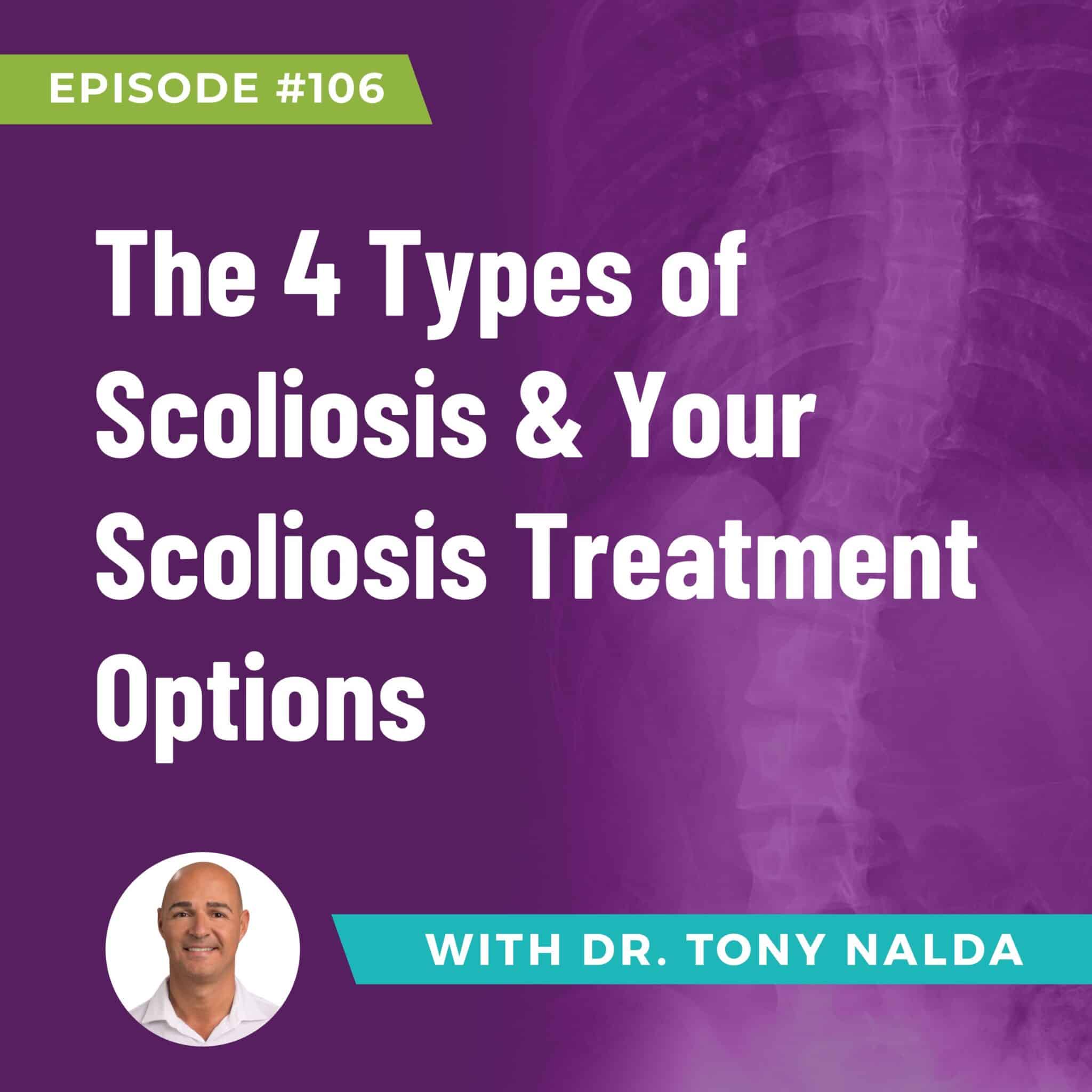Episode 106: The 4 Types of Scoliosis & Your Scoliosis Treatment Options
Understanding the nuances of scoliosis is essential for effective diagnosis and treatment. In this episode, Dr. Tony Nalda discusses the 4 types of scoliosis and their implications for treatment strategies.
4 Types of Scoliosis & Treatment Options
- Idiopathic Scoliosis: This type of scoliosis is characterized by its unknown cause, hence the term "idiopathic”. idiopathic scoliosis is multifactorial, with various genetic and environmental factors potentially contributing to its development. It commonly emerges during the juvenile years, with diagnosis often occurring between ages 10 and 18. Despite ongoing research, the precise cause remains elusive, making treatment focused on managing the curvature and its impact on the individual's life.
- Degenerative Scoliosis: Contrary to common belief, degenerative scoliosis isn't solely a consequence of age-related degeneration. Untreated misalignments or injuries may contribute to its onset, particularly in the lumbar spine. This type of scoliosis typically manifests around 40 years of age, with women being more commonly affected. Symptoms often include low back pain and sciatica due to nerve compression. Treatment aims to address the underlying misalignments and alleviate symptoms, focusing on preserving mobility and quality of life.
- Neuromuscular Scoliosis: Neuromuscular scoliosis arises from underlying neurological or muscular conditions such as cerebral palsy, muscular dystrophy, or Down syndrome. These conditions affect either the muscles' tension or the nervous system, leading to spinal curvature during growth phases. Treatment approaches may vary depending on the specific neuromuscular condition but often involve managing the structural aspects of the curvature to optimize function and mobility.
- Congenital Scoliosis: Congenital scoliosis stems from abnormalities in fetal development, resulting in malformed vertebrae. These abnormalities occur in utero, leading to structural differences in the spine from birth. While congenital scoliosis presents unique challenges due to its bony deformities, early intervention during growth phases can help mitigate progression. Treatment focuses on managing the curvature and addressing any associated complications to support optimal spinal health.
Regardless of the type, scoliosis evolves into its own structural issue over time, necessitating targeted intervention. Whether idiopathic, degenerative, neuromuscular, or congenital, scoliosis demands a comprehensive treatment approach tailored to individual needs. By understanding the intricacies of each scoliosis type and its treatment nuances, individuals can embark on their journey towards effective management and improved quality of life.
To delve deeper into the world of scoliosis and explore personalized treatment approaches, tune in to Dr. Nalda's podcast.
Artlist.io 847544
Podcast: Play in new window | Download
Subscribe: RSS
Dr. Tony Nalda
DOCTOR OF CHIROPRACTIC
After receiving an undergraduate degree in psychology and his Doctorate of Chiropractic from Life University, Dr. Nalda settled in Celebration, Florida and proceeded to build one of Central Florida’s most successful chiropractic clinics.
His experience with patients suffering from scoliosis, and the confusion and frustration they faced, led him to seek a specialty in scoliosis care. In 2006 he completed his Intensive Care Certification from CLEAR Institute, a leading scoliosis educational and certification center.
About Dr. Tony Nalda
 Ready to explore scoliosis treatment? Contact Us Now
Ready to explore scoliosis treatment? Contact Us Now








